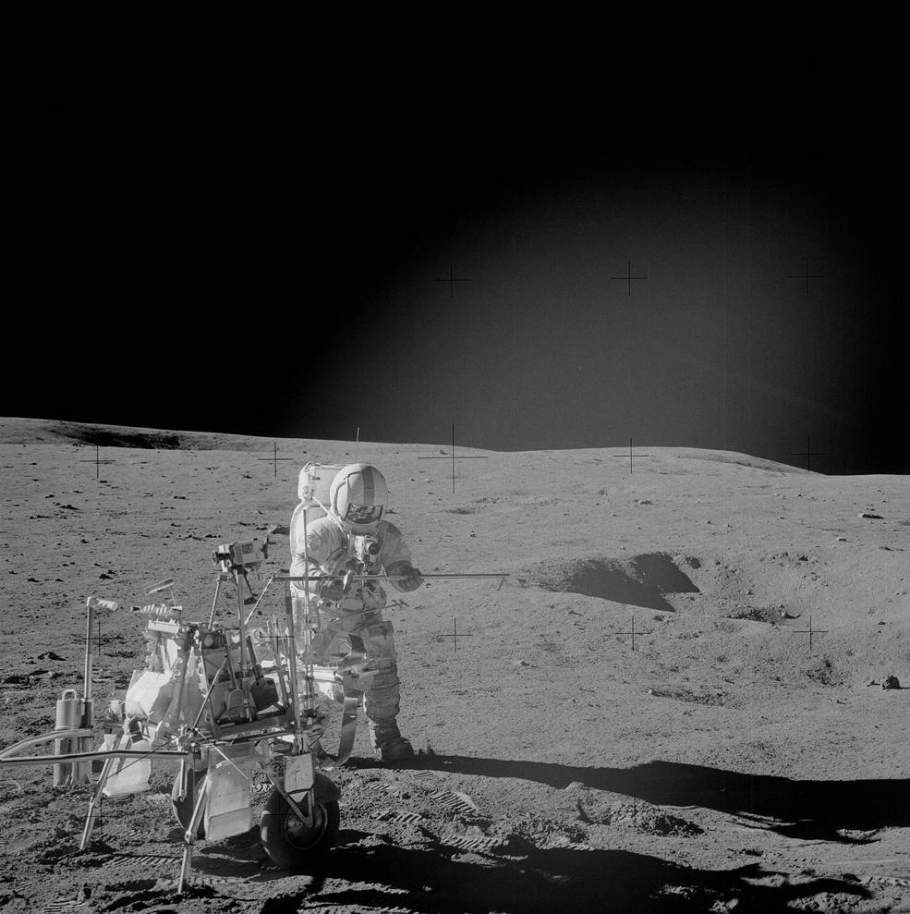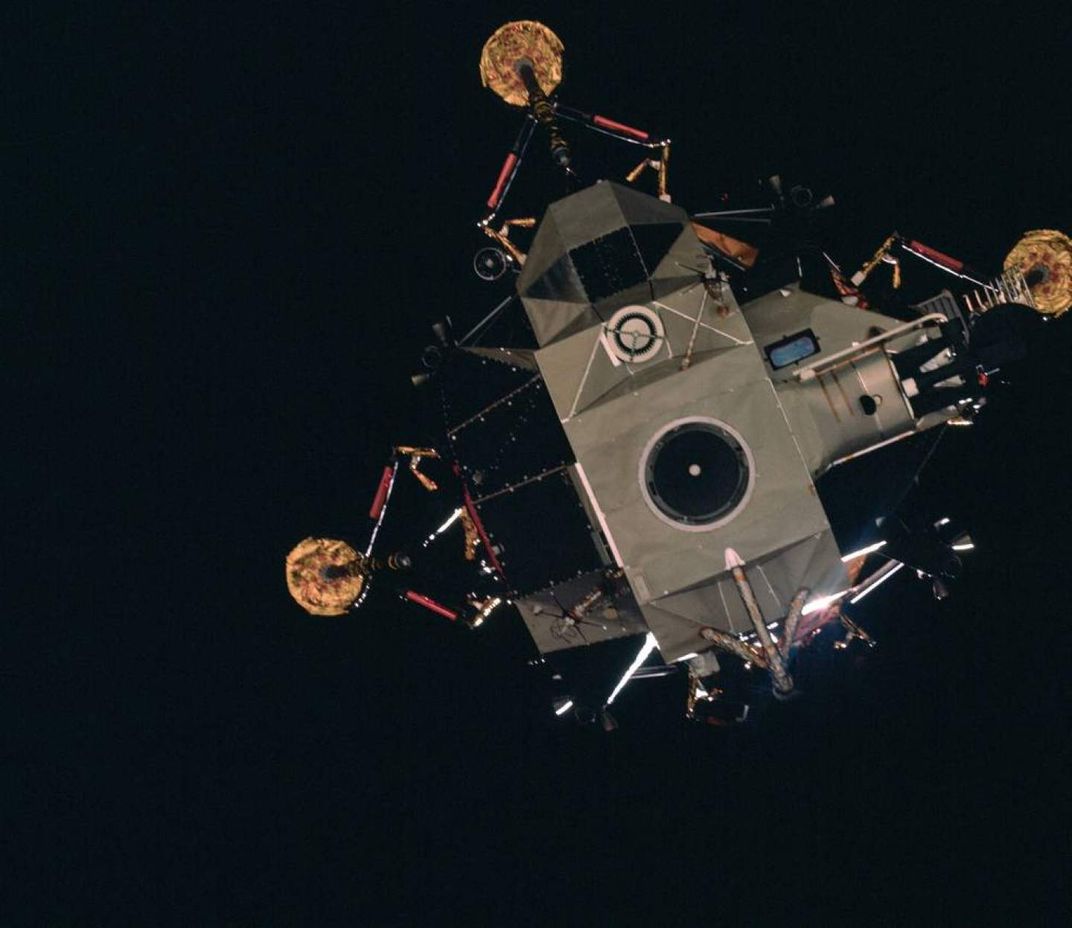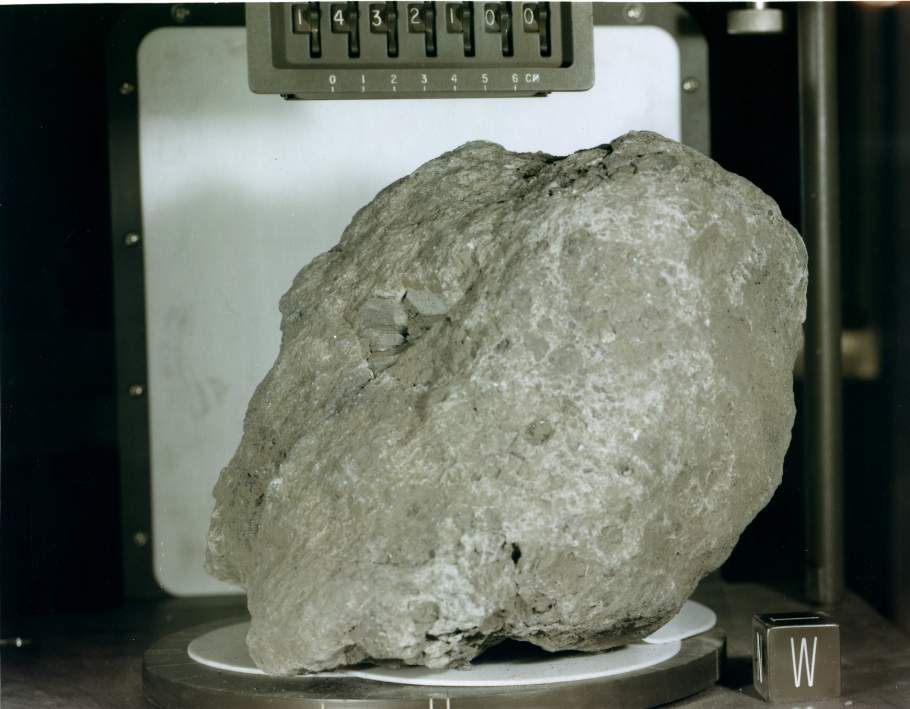Lessons from Apollo 14
The Apollo program should be remembered as much for landing the first humans on the Moon as it is for countless demonstrations of problem solving and ingenuity, of continual fine-tuning and honing of expertise, which enabled NASA to set even more ambitious goals with each successive mission.
:focal(593x383:594x384)/https://tf-cmsv2-smithsonianmag-media.s3.amazonaws.com/blogging/featured/apollo_14_eva1_shepard_on_surface_as14-66-9229hr.jpg)
Fifty years ago, the Apollo 14 mission renewed confidence in NASA and the United States’ ability to land humans on the Moon with a successful touchdown in the lunar highlands on February 5, 1971. The previous spring, as the Apollo 13 mission flew towards the Moon, an oxygen tank in the service module ruptured, forcing an abort. After an extensive accident investigation and thorough modification and upgrade of the spacecraft, NASA was ready to fly to the Moon again, with Apollo 14.
When President Kennedy proposed the Apollo program in 1961, he laid out a distinct finish line: send humans to the Moon and return them safely back to Earth before the end of the decade. This clear and concise objective focused attention on Apollo 11—the first lunar landing mission in July 1969. But the Apollo program should be remembered as much for landing the first humans on the Moon as it is for countless demonstrations of problem solving and ingenuity, of continual fine-tuning and honing of expertise, which enabled NASA to set even more ambitious goals with each successive mission. Every Apollo flight saw upgraded and improved hardware, longer duration stays on the Moon, more extensive scientific activities, and greater distances traversed, among other measures.

For Apollo 14, in addition to safety upgrades, this meant the addition of the Modular Equipment Transporter (MET). Much like a wheelbarrow, the MET aided the astronauts with hauling equipment and lunar samples across the lunar surface. During Apollo 11, the astronauts carried their tools by hand, making movement on the lunar surface more cumbersome. For Apollo 12 in November 1969, NASA added a hand tool carrier, which kept the equipment organized and accessible but still required the astronauts to lug the tools around the lunar surface. With the MET, astronauts Alan Shepard and Edgar Mitchell could stow their scientific equipment, tools, camera, extra film magazines, and sample collection bags and containers. They could also haul the geological samples (Moon rocks and lunar soil) more easily across the lunar surface.
Made of metal tubes extending 86 inches long, 39 inches wide, and 32 inches high, the MET weighed a portable 26 pounds. Using the MET’s single handle, the astronauts could tow up to 140 pounds of equipment and samples at an estimated travel rate of 3.5 feet per second, slightly slower than the average gait on Earth. Goodyear designed the MET’s two tires, which were 16 inches in diameter, four inches wide, and inflated with nitrogen at 1.5 psi. Two legs provided stability.

Apollo 14 inherited Apollo 13’s landing site: the hilly Fra Mauro region. Nearly four billion years ago, a massive asteroid struck the Moon, creating the Imbrium Basin, and ejecting material far and wide. Part of this material formed Fra Mauro. Although it would be more challenging to land in Fra Mauro than the previous two landing sites, it was geologically richer. Scientists hoped that rocks collected in this region would yield clues about the early history of the Moon and the formation of the solar system.
On February 5, 1971, Shepard and Mitchell achieved the Apollo program’s most precise Moon landing, setting down the lunar module less than 200 feet from their targeted landing site. Mitchell had named the lunar module Antares, after the most visible star in the constellation Scorpius, which was visible as they descended towards the lunar surface. After they climbed down the lunar module ladder, Shepard and Mitchell deployed the MET, which was tucked into quad 4 of Antares’s descent stage.

The astronauts’ first extravehicular activity (EVA) focused on setting up the Apollo lunar surface experiment package and other experiments with the aid of the MET. The second EVA was dedicated to exploring the Cone Crater, a relatively young formation east of their landing site. As they pulled the MET along behind them, Shepard spotted a large breccia, a type of rock composed of fragments of various rocks fused together. He reported back to Mission Control, “There’s a football-size rock, Houston, coming out of this area, which will not be bagged. It appears to be the prevalent rock of the boulders of the area. Got it?” Of the nearly 100 pounds of lunar material the Apollo 14 crew collected on the Moon, this sample was by far the largest. Although designated 14321, it earned the nickname “Big Bertha,” a nod to the nickname for superheavy German artillery used in World War I. At nearly 20 pounds, Big Bertha was the third-largest Moon rock brought back to Earth during the entire Apollo program. Shepard likely had to maneuver himself as low as possible to pick up the sample with his gloved hands. The astronauts then loaded Big Bertha on the MET, which helped them transport the substantial sample back to the lunar module.

Big Bertha recently made headlines, decades after Shepard collected the rock from the Moon. A 2019 study published in Earth and Planetary Science Letters, suggests that a small 2-centimeter sliver of the sample might have originally come from the Earth’s crust, not the Moon. This fragment is brighter than the rest of the sample and resembles granite. It contains quartz, feldspar, and zircon, minerals common on Earth but uncommon on the Moon. The crystallization structure of the fragment also points to a potential terrestrial origin. Scientists theorized that a meteor impact of Earth roughly 3.9 billion years ago could have ejected material—including the sliver in Big Bertha—that eventually crashed into the Moon. If this is correct, the fragment in Big Bertha would be the oldest Earth rock ever discovered. If not, the findings will encourage planetary geologists to reevaluate their understanding of the lunar interior. Future research on Apollo samples, and perhaps future lunar sample return missions, might hold the key.
The addition of the MET to the Apollo 14 mission facilitated the collection of Big Bertha and other samples by extending the astronauts’ range on the lunar surface. The addition of the Lunar Roving Vehicle (LRV) on the next mission—Apollo 15—would extend this range even farther. Just as the MET improved on the use of Apollo 12’s hand tool carrier, the LRV improved on the capabilities of the MET. Each mission prepared NASA for a more challenging and complex mission in the future. As the recent analysis of Big Bertha reveals, there is still much to learn from the Apollo program, including the importance of building on discoveries of past exploration.
